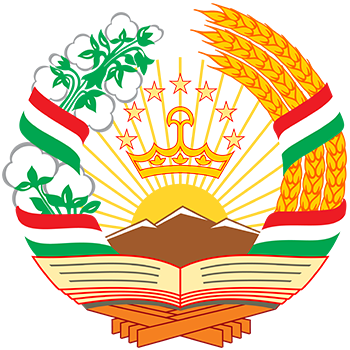Financial and Currency Sector
In recent years, Tajikistan’s financial and banking system has achieved significant stability and is rapidly developing. Currently, the country's banking system consists of 65 financial institutions, including 15 traditional banks, 1 Islamic bank, 1 non-bank credit institution, 22 microcredit deposit organizations, 3 microcredit organizations, and 23 microcredit funds. Among them, 9 institutions operate entirely with foreign capital and 4 institutions with the participation of foreign capital.
The participation of foreign investors in the capital of the banking system indicates that the attractiveness and investment climate of the country are gradually improving, and the share of foreign capital in the charter capital of the banking system is increasing. In 2024, the share of foreign capital in the charter capital of financial organizations reached 28 percent, a 20 percent increase compared to 2019.
Meanwhile, in 2024, financial institutions issued loans totaling 4,190.9 million US dollars. Foreign capital attracted increased by 88.7 percent compared to the end of 2023.
In 2024, the return on assets (ROA) and return on equity (ROE) indicators were 2.6 percent and 13.9 percent, respectively, which opens up opportunities for attracting more capital.
In 2024, the capital adequacy ratio of financial and credit organizations was 21.8 percent (with a regulatory requirement of 12 percent), and the current liquidity ratio was 78.3 percent, indicating strong capital sustainability and timely fulfillment of obligations by the country's banking system.
The credit dynamics of financial organizations are growing steadily each year. In 2024, the total volume of loans issued by the banking system amounted to 24.6 billion somoni, which is 15 billion somoni or 157 percent more than in 2019.
The volume of non-performing loans (NPLs) amounted to 1.5 billion somoni, with their share in the loan portfolio at 7.1 percent, which is 5.4 percentage points higher than the previous year but 39.7 percentage points lower than in 2016. In 2024, the banking system managed to significantly reduce the share of non-performing loans, bringing it down from double-digit to single-digit figures.
Furthermore, the adoption of relevant regulatory legal acts governing Islamic banking created favorable conditions for attracting foreign investment into the Islamic banking sector. As of December 31, 2024, there was 1 Islamic bank and 3 Islamic banking windows operating in the Republic of Tajikistan.
As of December 31, 2024, the total balance of deposits in the banking system reached 25,529.9 million somoni, an increase of 31.2 percent compared to the same period in 2023.
Another aspect of the attractiveness of investing in the country’s banking system is the assurance of stable and transparent operations of financial institutions in accordance with advanced international standards, with the National Bank of Tajikistan consistently publishing necessary information on its website.
A stable deposit insurance system operates in the country, ensuring the protection of clients’ rights and interests in the banking system.
The Presidential Decree of the Republic of Tajikistan "On Measures to Expand the Transition to Cashless Payments" dated June 22, 2023, No. 586, and the move towards a digital economy have further increased the demand for banking services. The country's sustainable economic growth (GDP growth of at least 8.0 percent over the past three years) has also raised the demand for banking services, requiring the creation of new credit institutions as well as the improvement and modernization of banking services.
In this regard, the annual growth of foreign capital inflows, which over the past three years has been no less than 30 percent, will also contribute to the opening of new banks with financing from foreign investors.
A wide range of financial services, from traditional banking to microfinancing, provides access to capital for various sectors of the economy, including small and medium-sized businesses, contributing to economic growth and investment attraction. This diversity of financial institutions allows investors to choose the most suitable methods for implementing their projects.
In this regard, Tajikistan’s financial and monetary sector has great investment potential and opportunities, and the following areas may be of interest to investors:
- establishing banks and credit institutions, including venture funds;
- opening branches of foreign banks in Tajikistan;
- setting up insurance companies;
- introducing a mortgage lending system;
- investing in companies developing innovative solutions for the banking system and financial sector;
- participating in private investment funds or venture capital investing in the development of startups and the financial sector;
- investing in crowdfunding and P2P lending to achieve high returns.
The rapid development of digital technologies, the banking system being in its early stages of development, the growth of foreign investments, the steady development of the economy, and the improvement in the population’s welfare have created very favorable conditions for attracting capital to Tajikistan’s financial and banking system.

 Русский
Русский 5 908
5 908 